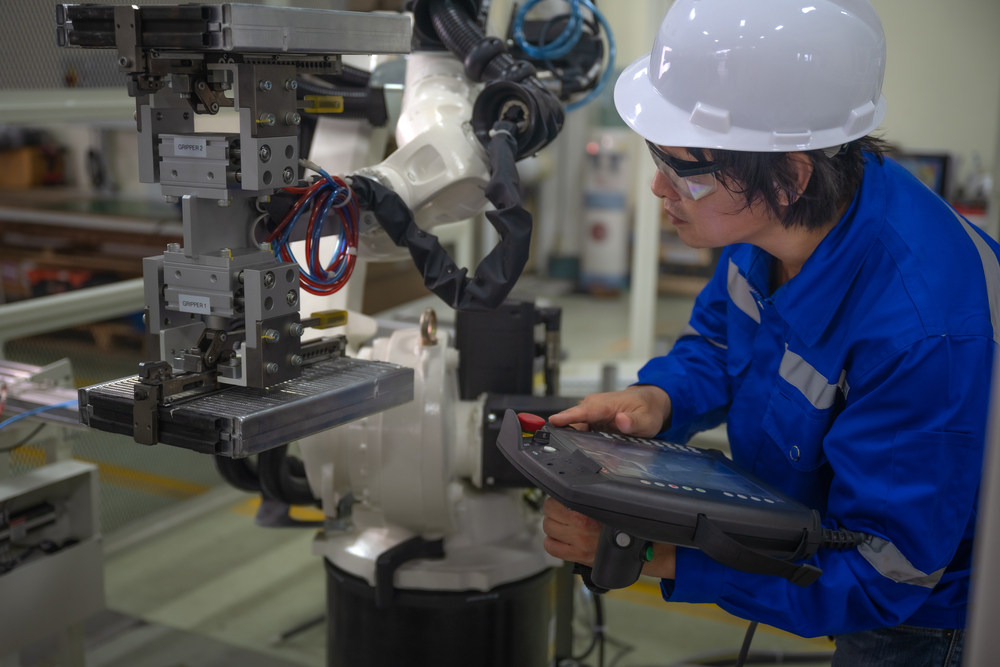Industrial Agitators: Driving Efficiency in Global Markets Post-COVID-19
Explore the expansion and emerging trends in the global industrial agitator market, driven by increased production capacities in the chemical sector and stricter environmental norms. Discover how India is poised to become a key player in this growth, benefiting from new export opportunities and significant investments.
Agitators are devices that mix various substances to achieve a uniform composition. They work by transferring rotational energy from a motor to a tank, where it facilitates two primary actions: discharge, which creates a circulating flow throughout the tank, and shearing, which applies local force to mix the materials effectively.
The most critical component of an agitator is its blades. The design of the agitator blades is crucial and varies depending on whether the priority is on discharge or shearing actions, as well as the viscosity of the material being mixed.
Common types of agitator blades include propeller, turbine, anchor, paddle, and ribbon blades.

Uses of Agitators
Agitators are employed across various industries for material mixing. In large-scale operations like factories, agitators typically handle substantial volumes, necessitating longer mixing times.
Small agitators are versatile, used from laboratory settings to manufacturing floors, capable of mixing quantities ranging from 20 to 3,000 liters efficiently. Larger agitators, designed for industrial-scale tasks, can handle volumes upwards of 10,000 liters and are often installed in multiple units across factories to maintain efficiency.
Principles of Agitators
Mixing Mechanisms:
Mixing in agitators involves two main processes: diffusion and convection. Diffusion refers to the spontaneous and uniform mingling of substances at the molecular level, while convection involves the large-scale movement within the tank, which disperses and integrates different materials.
Agitator Dynamics:
When agitator blades rotate, they first disperse the liquids within the tank, akin to shaking a bottle of dressing before use. The design of the blades influences the movement of the liquid, with different shapes causing specific flow patterns. For instance, paddle blades generate more vertical flow, whereas turbine blades, attached to a rotating disk, produce high shearing forces.
Agitator Power:
The motor's rotation is transmitted to the blades through a shaft, which might include a reduction gear to adjust the speed and increase torque. The shaft’s seal ensures the tank remains closed off from the external environment, typically using gland packings or mechanical seals.
Types of Agitators
Agitator Design:
Agitators are integral in industries from oil refining to food production, favored for their simple design and cost-effectiveness. An agitator typically consists of a tank, blades, a motor, and a shaft that transmits the motor’s power to the blades.
Types of Agitator Tanks:
Agitators can vary based on how materials are introduced into them, categorized into tank, duct, and other types. Specific types of tank agitators include one-rotating, reciprocating reversing, and vertical motion types, with further classifications based on the orientation and positioning of the blades.
Agitation Blades and Their Uses:
Blades differ based on the viscosity of the materials they are designed to mix. Propeller, turbine, and paddle blades are optimal for low-viscosity substances, focusing on basic mixing and dispersion. Conversely, anchor and ribbon blades are better suited for high-viscosity materials, aiding in homogenization and heat exchange by enabling axial flow.
This overview encapsulates the functionality and diversity of agitators in industrial applications, highlighting their crucial role in achieving consistent and homogenous product outputs.
Other Information on Agitators
Agitation Blade Types for Different Viscosities:
- Low Viscosity Applications:
- Propeller Blades: Shaped similarly to helicopter propellers, these blades are ideal for straightforward, effective mixing.
- Turbine Blades: Composed of a disc with attached blades, turbine blades offer high shear forces, making them suitable for refining droplets and dispersing gases within liquids.
- Paddle Blades: Resembling a ship's oar, paddle blades are often used in academic and industrial research for their simplicity and effectiveness in basic mixing tasks.
- High Viscosity Applications:
- Anchor Blades: These blades are designed like a ship's anchor and are particularly effective in moving thick or sticky substances, though they struggle with creating flow in the axial direction.
- Ribbon Blades: Featuring a complex structure, ribbon blades excel in creating axial flow, making them ideal for blending and moving high-viscosity materials.
Installation and Operation of Agitators:
Agitators must be correctly installed and operated to ensure efficient and safe performance. The installation process typically involves securing the agitator in a fixed position within the tank and connecting it to a power source. The operation includes setting the appropriate speed and power based on the material's properties and desired outcome of the mixing process.
Maintenance and Safety Considerations:
Regular maintenance is crucial to prolong the lifespan and enhance the efficiency of agitators. This includes routine checks and replacement of the blades, seals, and motors as necessary. Safety is also a primary concern, especially in industrial environments where the mixtures might be volatile or under high pressure. Proper enclosure of the moving parts and adherence to safety regulations are mandatory to prevent accidents.
Advancements in Agitator Technology:
With advancements in technology, modern agitators are becoming more efficient and adaptable. Innovations include the development of variable speed drives that allow for precise control over the mixing process, and the use of materials that are more resistant to corrosion and wear. Moreover, digital monitoring systems are increasingly being integrated to provide real-time data on the performance of the agitator, facilitating better control and immediate troubleshooting.
Environmental and Economic Impact:
Agitators play a significant role in promoting sustainable industrial practices by ensuring thorough mixing with minimal waste. Efficient mixing can reduce the amount of raw material needed and decrease energy consumption, contributing to lower production costs and environmental impact.
Agitators are essential machines in numerous industries, enabling the homogenization, dispersion, and proper mixing of substances. Understanding the types of agitators, their operation, and maintenance is vital for optimizing the performance and extending the service life of these crucial industrial tools.
An industrial agitator is a mechanical device designed for a range of mixing tasks such as homogenization, suspension, dispersion, and facilitating mass and heat transfer across different media (liquids, gases, or solids) in sectors like pharmaceuticals, chemicals, food, and cosmetics. The growth in the global industrial agitators market is largely driven by the expansion of production capacities in key industries, particularly the chemical sector. Following the COVID-19 pandemic, the Chinese government has implemented stricter environmental protection regulations, prompting global companies to mitigate supply risks by diversifying their sources. This shift has enhanced export opportunities for Indian companies, positioning India's chemical industry for significant growth and substantial investments. Concurrently, there has been a rising demand for high-quality products. As a result, international agitator manufacturers have entered the Indian market, offering products priced significantly higher—nearly three to four times—than those made in India.











